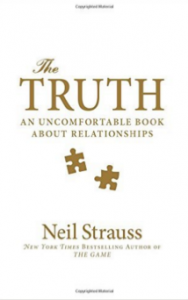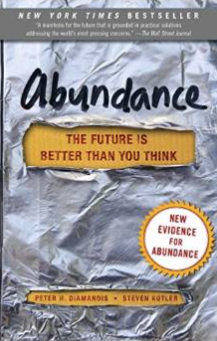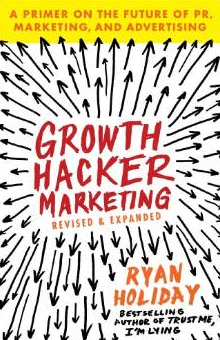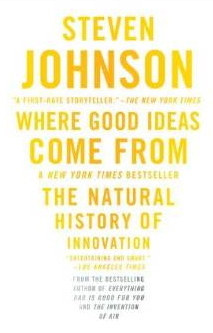I recently read “The Truth: An Uncomfortable Book About Relationships” by Neil Strauss. Below are the quotes I found most interesting. If you like the quotes, please buy the book here.
 “Intimacy is sharing your reality with someone else and knowing you’re safe, and them being able to share their reality with you and also be safe.” (50)
“Intimacy is sharing your reality with someone else and knowing you’re safe, and them being able to share their reality with you and also be safe.” (50)
“But why should you have to make that sacrifice? A relationship should be about what you both want, not about what you both don’t want each other to have.” (54)
“Maybe that’s the female dilemma. She marries someone who’s giving her love and romance, but over time she gets taken for granted or turned into a maid or becomes a baby factory or gets cheated on. There’s not a single emotional need of hers that’s filled by her husband. Then he has the nerve to complain that sh’es not sexual or attractive when he’s drained the life out of her.” (83)
“Childhood trauma may sneak up from behind and fuck you in the ass when you grow up, but at least it leaves a tip on the nightstand.” (84)
“As a journalist, I’ve met a lot of so-called experts. Most are just people with a little experience and a lot of confidence who’ve given themselves a title with which they can fool the suggestible and dim-witted.” (85)
“Remember that humor is a wall. It’s a form of denial, just the same as repression, rationalization, globalization, and minimization.” (85)
“Are you relentlessly driving yourself to succeed and beating yourself up when you fail? Maybe that’s because when you were a teenager, your parents made you feel as if your worth as a human being was dependent on your grades, touchdowns, or accomplishments.” (88)
“Only when our love for someone exceeds our need for them do we have a shot at a genuine relationship together.” (97)
“All my anxiety and fear and guilt have peeled away, as if they were layers of clothing I didn’t know I was wearing. I thought they were part of my skin the whole time, but it runs out they were someone else’s hand-me-downs.” (105)
“I used to think that intelligence came from books and knowledge and rational thought. But that’s not intelligence: It’s just information and interpretation. Real intelligence is when your mind and your heart connect. That’s when you see the truth so clearly and unmistakably that you don’t have to think about it.” (105)
“Suddenly there seem to be very few adults in the world, just suffering children and overcompensating adolescents.” (109)
“Continuously complying with someone else’s priorities at the expense of my own is called pathological accommodation.” (134)
“If you add up all the people who’ve cheated in their relationships, that’s tens of millions of customers in the U.S. alone. Now add to that the even huger number of people who watch porn, and this is the smartest business plan in the world. If they turn being male and horny into some kind of brain cancer that’s covered by health insurance, they’ll be billionaires.” (139)
“Bill W., the co-founder of Alcoholics Anonymous, was so notorious for cheating on his wife with attractive women who attended sobriety meetings that his colleagues later started calling this type of lechery the thirteenth step.” (143)
“No matter what your point of view may be, you can always find someone with a Ph.D to support it.” (144)
“It was the Catholic CHurch that began a relentless campaign to make monogamy and lifelong marriages inviolable institutions in the ninth century.” (163)
“We have so many contradictory, repressive, self-limiting beliefs about sexuality – and almost every one of them stems from a pathological need to dictate to someone else what they are and aren’t allowed to do with their body and heart.” (166)
“Loneliness is holding in a joke because you have no one to share it with.” (175)
“Perhaps just as there are cults around religion, so too are there cults around intimacy. But instead of monotheists, pantheists, and atheists, there are monogamists, polyamorists, and celibates. Each belief system comes with its own rituals, whether they be twelve steps, pujas, exclusivity, adultery, or arguing about money every night.” (182)
“Guys bring their dating problems on themselves. They program their daughter with an aversion to men and sex for fear that she’ll meet someone just like her father, then they meet someone else’s daughter and expect her to just jump into bed without anxiety or reservation.” (192)
“When your wife is tired of making the effort to understand you, when she’s fed up with hearing the same stories coming out of your mouth, when she holds so much resentment that it poisons every conversation, when she’s nicer to telemarketers than she is to you, when the only time she’s passionate with anyone anymore is when she’s criticizing you – that’s when you want a mistress.” (217)
“Once fear of loss is taken away, you get past jealousy.” (221)
“Some people live in an endless on-and-off relationship with control. Either they’re trying to exert it over their lives – by getting obsessive about a diet, a belief system, a phobia, a hobby, a need for order, a twelve-step program – or they’re completely out of control, making a mess of their lives.” (230)
“Any good Jungian therapist will tell you, you’re not supposed to repress the shadow in the first place. That’s when bad things happen. The goal is to integrate it.” (230)
“I used to think that a good relationship meant always getting along. But the secret, I realize, is that when one person shuts down or throws a fit, the other needs to stay in the adult ego state. If both people descended to the wounded child or adapted adolescent, that’s when all the forces of relationship drama and destruction are unleashed.” (246)
“Relationships are about giving, not getting.” (264)
“Life is a learned skill, but instead of teaching it, our culture force-fills developing minds with long division and capital cities-until, at the end of the mandatory period of bondage that’s hyperbolically called school, we’re sent into the world knowing little about it. And so, left on our own to figure out the most important parts of life, we make mistakes for years until, by the time we’ve learned enough from our stumbling to be effective human beings, it’s time for us to die.” (266)
“I have no idea what the boundary is between taking care of my emotions, wants, and needs and taking care of the emotions, wants, and needs of others.” (281)
“The problem many people have is that the exact quality that originally attracted them to their partner becomes a threat once a serious relationship beings.” (324)
“Most people seem to believe that if a relationship doesn’t last until death, it’s a failure. But the only relationship that’s truly a failure is one that lasts longer than it should. The success of a relationship should be measured by its depth, not by its length.” (334)
“Willard F. Harley writes that a man needs five basic things from his wife: sexual fulfillment, recreational companionship, physical attractiveness, domestic support, and admiration… A woman’s five basic needs are affection, conversation, honesty and openness, financial support, and family commitment.” (334)
“Try is the critical word here, because managing feelings is like tamping lions. No matter how successful you think you are, they’re still ultimately in control.” (342)
“life is a test and you pass if you can be true to yourself.” (347)
“Sex is easy to find – whether through game, money, chance, social proof, or charm. So are affairs, orgies, adventures, and three-month relationships-if you know where to look and are willing to go there. But love is rare.” (350)
“Evidently, if you have long receptors in the brain’s reward center for the hormone vasopressin, then you’re more likely to be monogamous. If not, then you’re a born player.” (363)
“The person who is too smart to love is truly an idiot.” (365)
“Our lives are like children’s building-block games in which objects are stacked one by one on top of each other. You can build the tower to a certain height without a problem, but as it continues to grow, eventually the instability of the foundation will cause everything to come tumbling down.” (366)
“love is when two (or more) hearts build a safe emotional, mental, and spiritual home that will stand strong no matter how much anyone changes on the inside or the outside. It demands only one things and expects only one thing: that each person be his or her own true self.” (381)
“I realize that I made a mistake by equating variety with freedom. I’m off all social and dating apps and websites. That’s freedom. Less than twenty people have my email address. That’s freedom. My phone barely makes a sound. that’s freedom.” (381)
“It turns out that leaving all my options open has kept me too busy juggling them to really live.” (381)
“The most caring thing to do when they’re upset is simply to ask if they want you to listen, to give advice, to give them space, or to give them loving touch.” (395)
“You can’t change a person unless they’re in diapers.” (400)
Harville Hendrix wrote that the unconscious purpose of a long-term relationship is to finish childhood.” (405)
“True intimacy is when partners stop living in the past – in their trauma history – and start having a relationship with each other in the present moment.” (406)
“In the end, love is not about finding the right person. It’s about becoming the right person>” (408)
“I’ve started thinking of the things my parents didn’t do perfectly as variables that make me an individual rather than as trauma that makes me a patient.” (416)
“It’s tragic. The wounds that humans get are so strong that they’re like robots operating on childhood programming.” (417)
Liked the quotes? Buy the book by clicking here.





